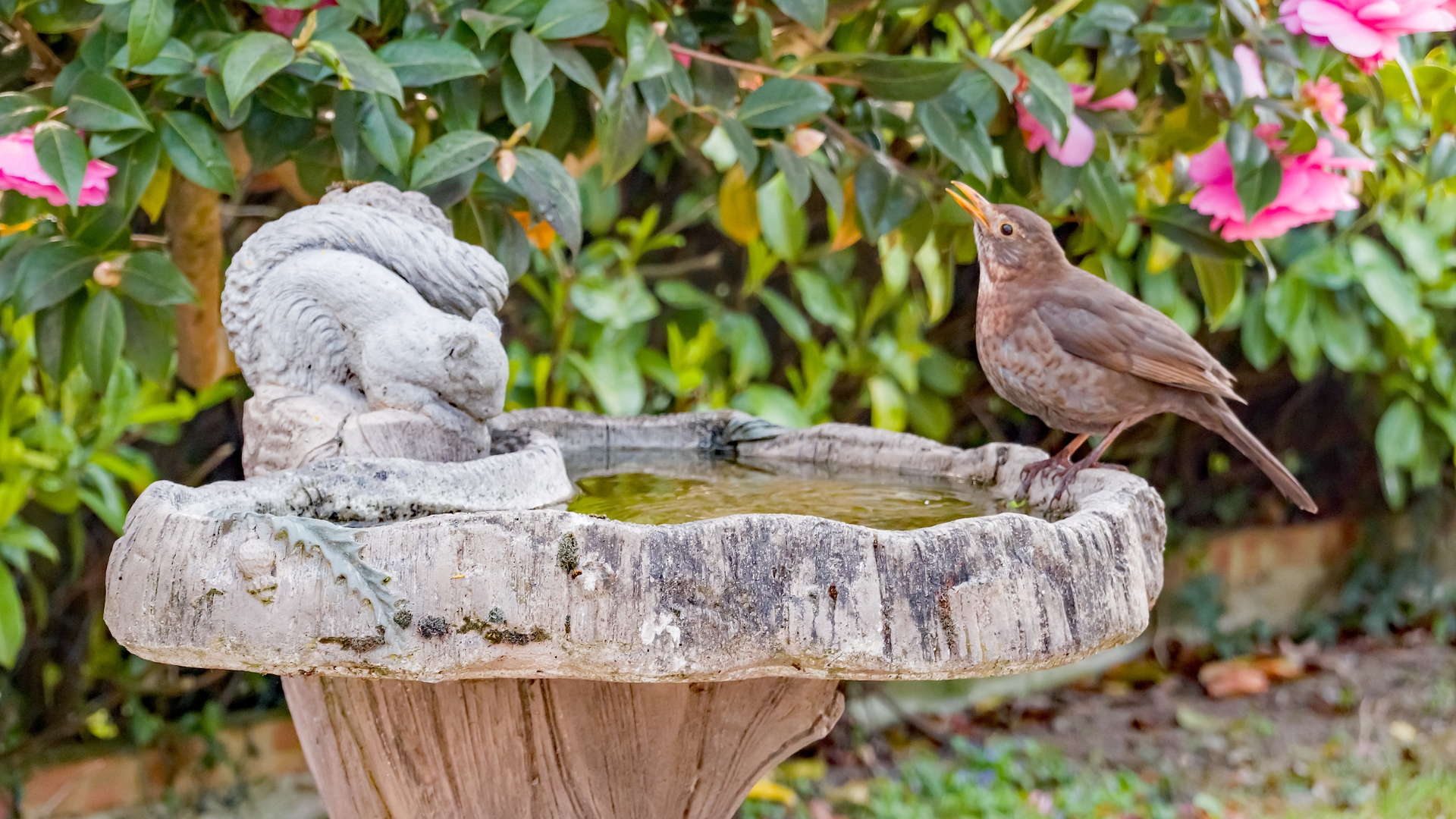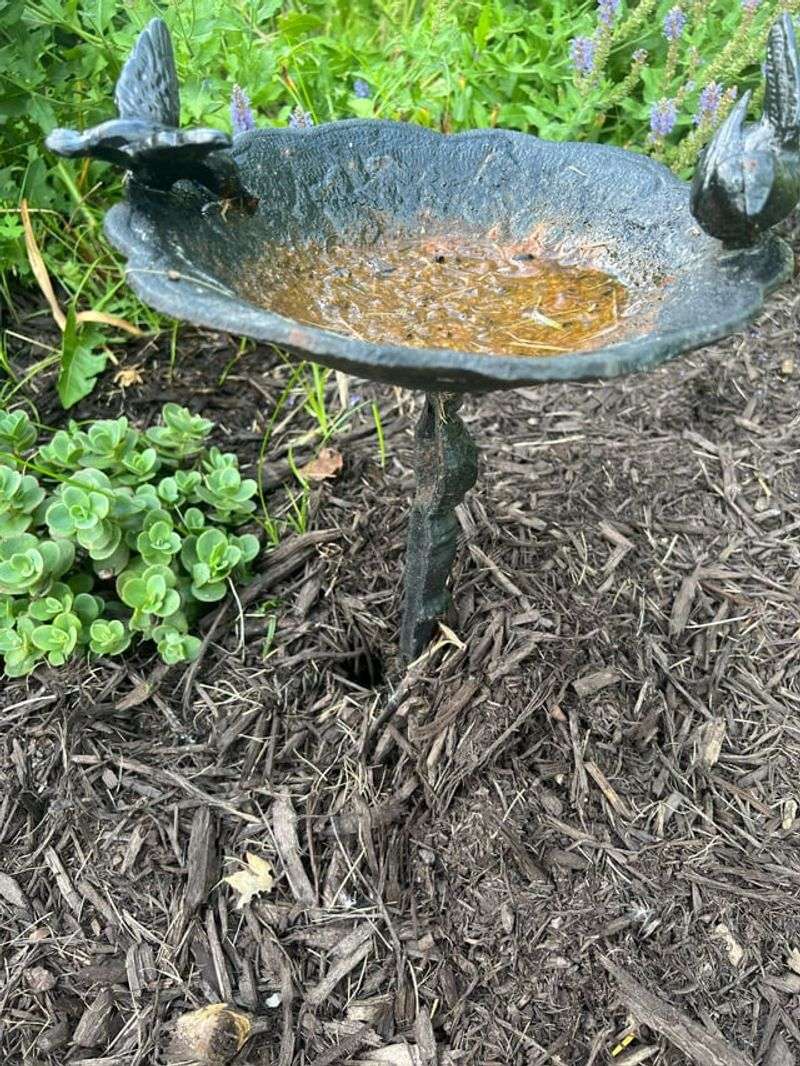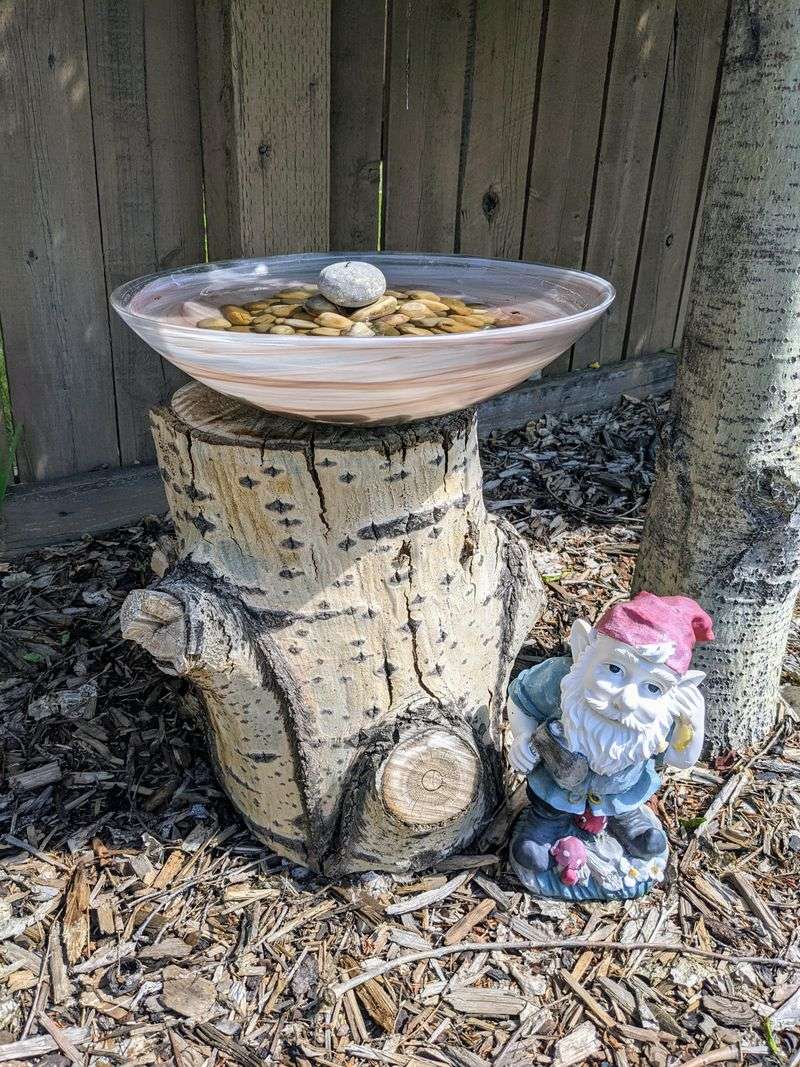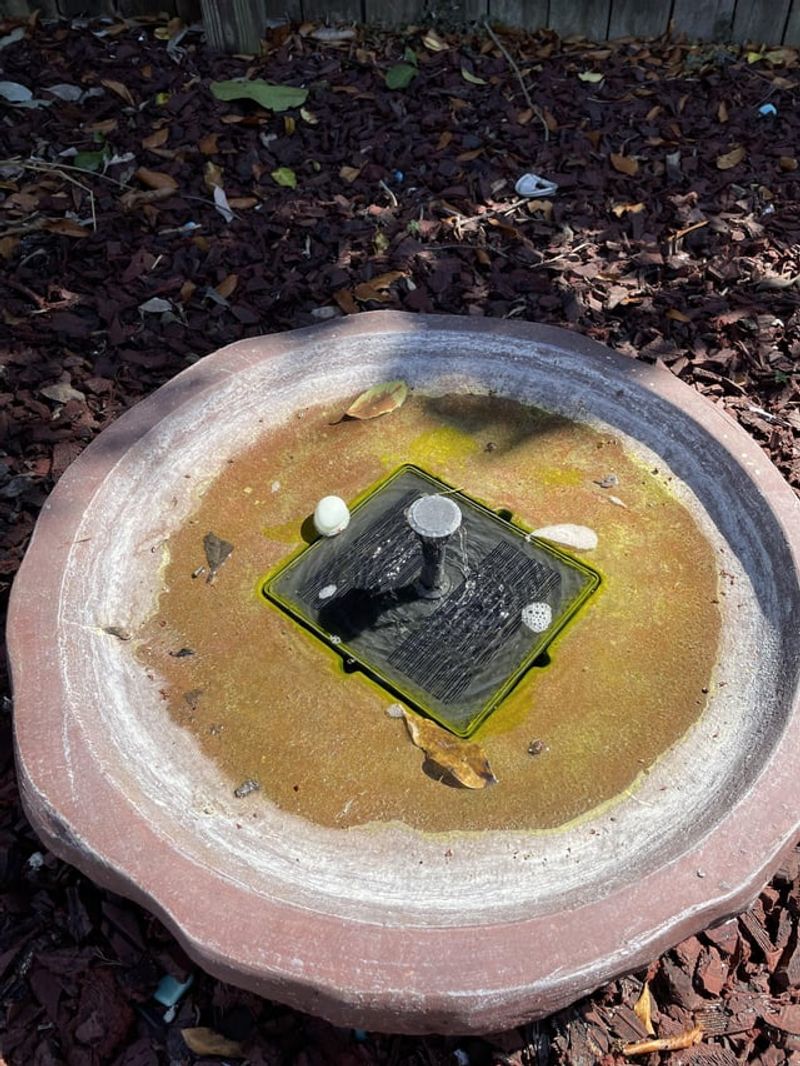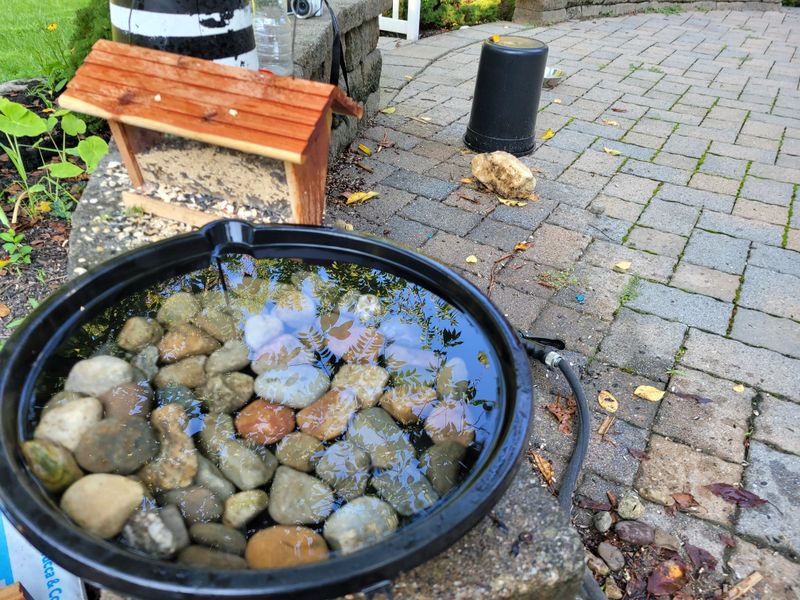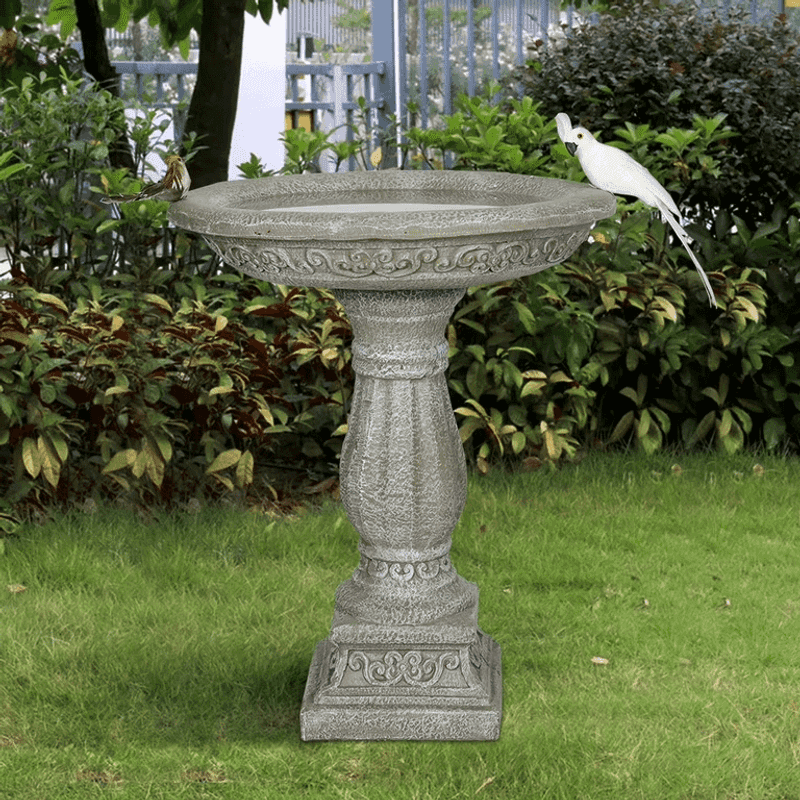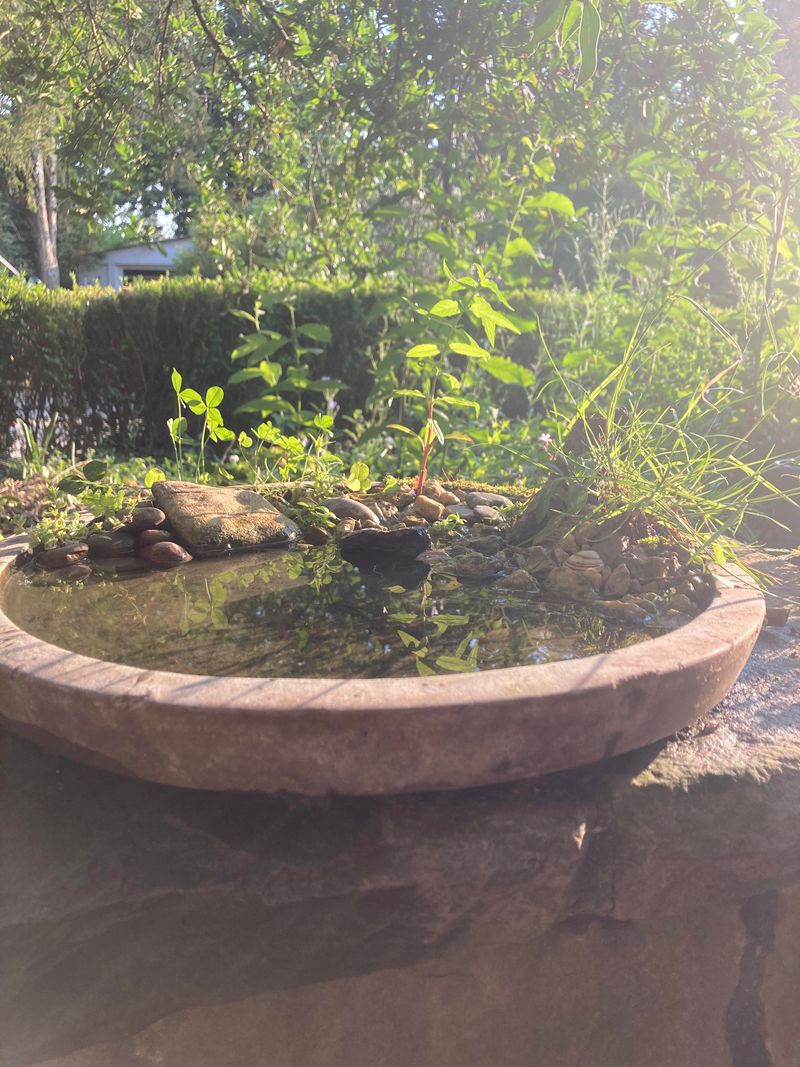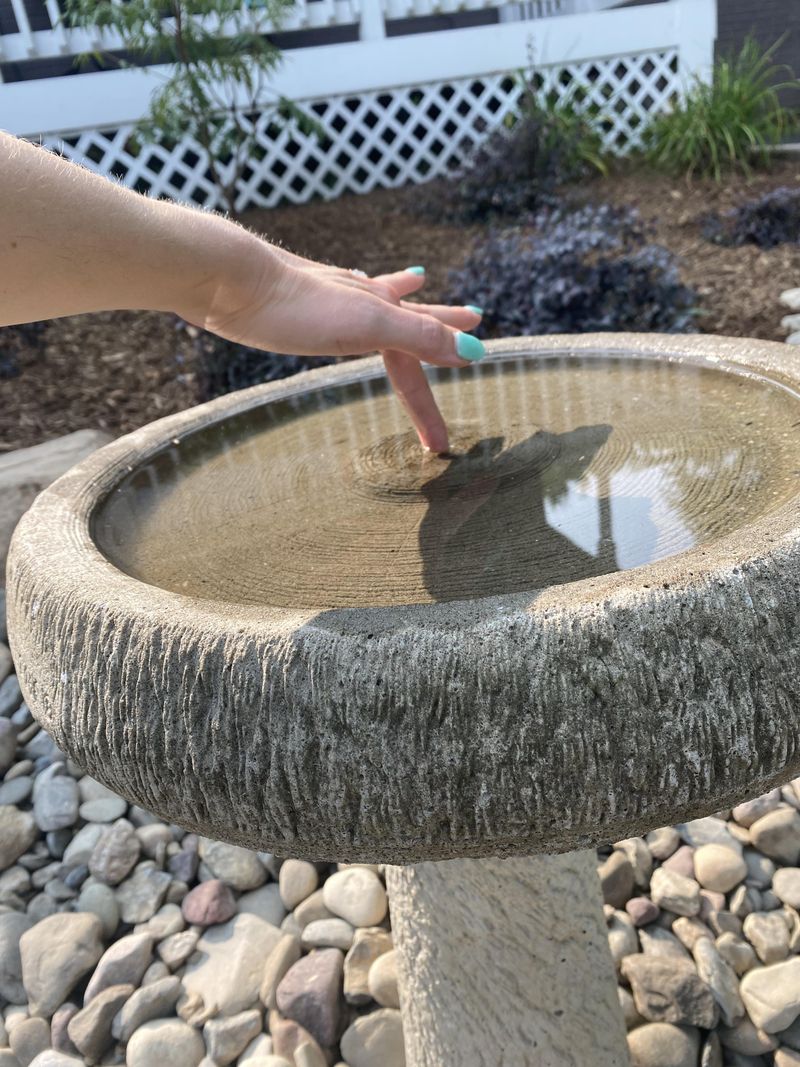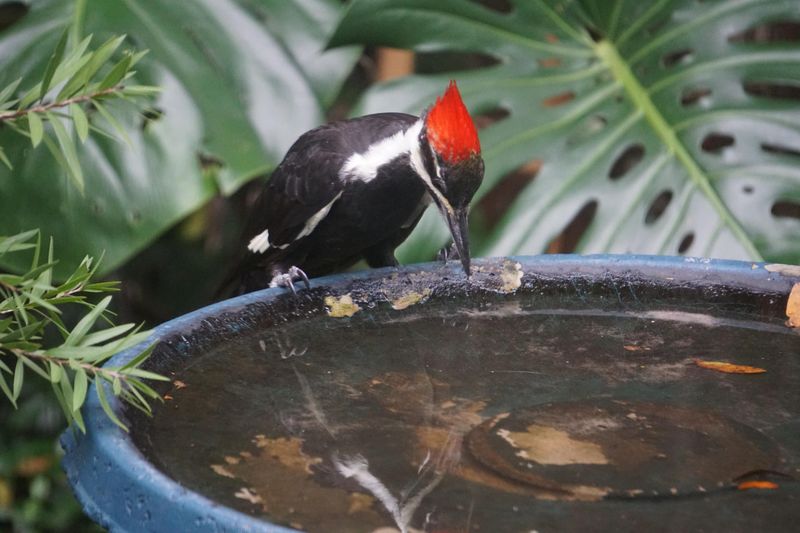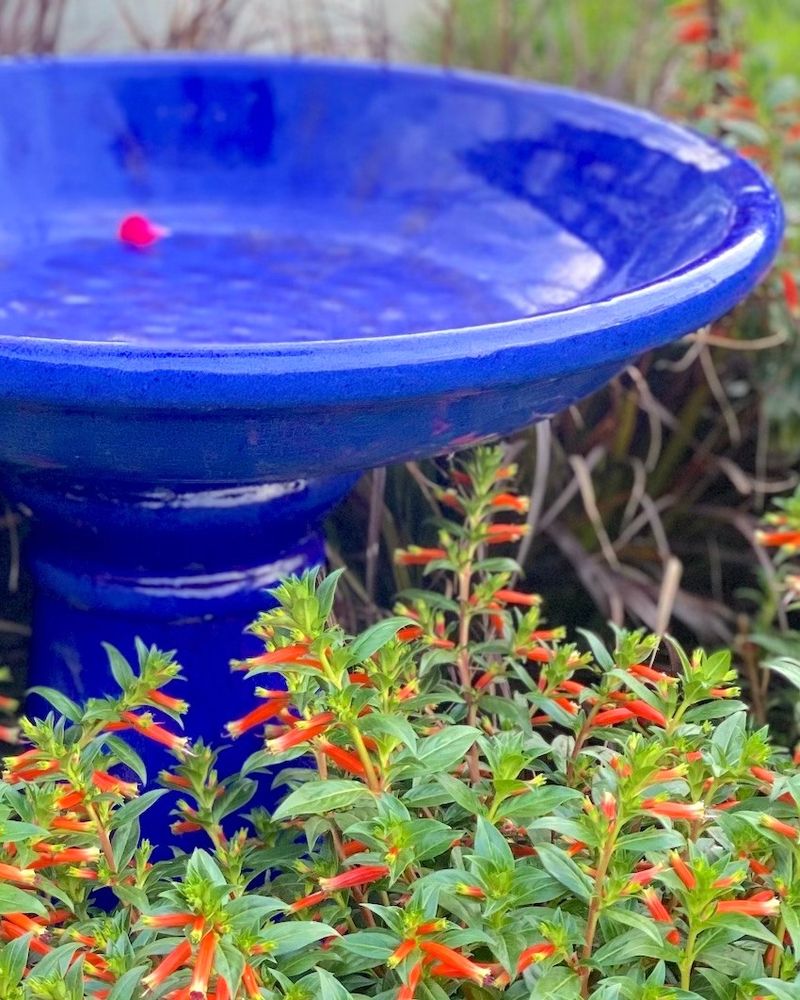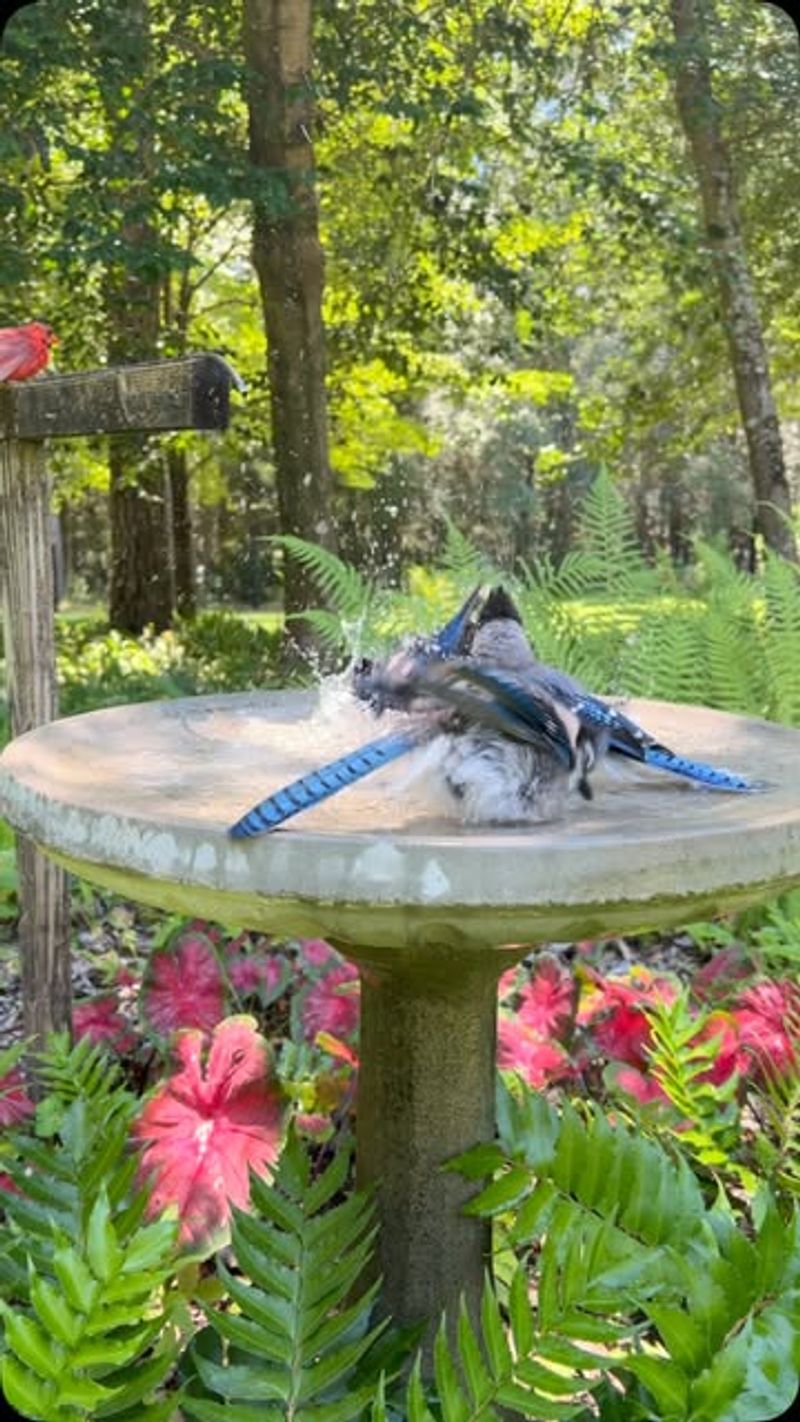It might seem like the sunny spot is perfect for a birdbath, but it’s not always the best choice for your feathered visitors. I learned the hard way when mine turned into a murky, overheated mess by midday.
Birds love a refreshing sip and splash, not a bath that feels like soup. A little shade can make a big difference in keeping the water clean, cool, and welcoming.
Before you settle on a spot, it’s worth giving it a second thought.
1. Water Evaporates Quickly
The summer sun can turn your birdbath into a dry bowl in just hours. Birds may arrive expecting refreshment only to find nothing but disappointment.
You’ll find yourself refilling multiple times daily, adding an unexpected chore to your routine. Birds rely on consistent water sources, and unreliable supplies might cause them to avoid your garden altogether.
2. Algae Growth Accelerates
Sunlight acts like a growth hormone for algae, turning your clean water green and slimy within days. The combination of warmth and light creates perfect conditions for these unwanted organisms to thrive.
Regular cleaning becomes much more frequent in sunny spots. Birds prefer clean water, and algae can potentially harbor harmful bacteria that might affect your feathered visitors’ health.
3. Water Temperature Becomes Dangerously Hot
On scorching summer days, water in direct sunlight can reach temperatures that are uncomfortable or even harmful to birds. Just like we avoid scalding hot baths, birds instinctively stay away from overheated water.
The heated water can actually increase a bird’s body temperature rather than helping them cool down. This defeats one of the main purposes of a birdbath during summer months.
4. Birds Prefer Shade for Safety
Many bird species feel vulnerable while bathing and drinking. Open, sunny locations make them nervous as predators can easily spot them from a distance.
Natural instincts drive birds to seek protected spots where they can watch for danger while bathing. A shaded location with nearby bushes or trees provides the security birds need to relax and fully enjoy your birdbath.
5. Cleaning Becomes More Frequent
Sunshine accelerates the breakdown of organic matter like feathers, droppings, and leaves that fall into your birdbath. This decomposition process makes the water dirty much faster than in shaded locations.
You’ll find yourself scrubbing more often to maintain healthy conditions. Most bird lovers prefer spending time watching their visitors rather than constantly cleaning their birdbath.
6. Material Deterioration Increases
UV rays from direct sunlight break down many birdbath materials over time. Plastic becomes brittle and may crack, while painted surfaces fade and peel much faster than those in shaded areas.
Even concrete and stone birdbaths aren’t immune to sun damage. The constant cycle of heating during the day and cooling at night can cause some materials to crack or develop leaks.
7. Fewer Bird Species Visit
Different birds have different comfort preferences. Many woodland species avoid open, sunny areas entirely, preferring the safety of dappled light or shade.
By placing your birdbath in direct sun, you’re unintentionally limiting your potential visitors. A shaded location attracts a wider variety of species, giving you more enjoyable birdwatching experiences throughout the day.
8. Bacterial Growth Concerns
Warm water creates an ideal environment for harmful bacteria to multiply. Just like food spoils faster in heat, birdbath water becomes a potential breeding ground for pathogens in direct sunlight.
These bacteria can cause diseases that spread between your feathered visitors. No bird lover wants their kindness to accidentally contribute to illness in the local bird population.
9. Water Mineral Buildup
As water evaporates in the sun, it leaves behind minerals that create unsightly white deposits on your birdbath. These crusty rings aren’t just unattractive – they can be difficult to remove without harsh chemicals.
Over time, these mineral deposits can actually damage some birdbath surfaces. A shaded location slows evaporation, reducing this troublesome buildup and keeping your birdbath looking nicer.
10. Reflection and Glare Problems
Sunlight reflecting off water can create confusing glare for birds, sometimes making it difficult for them to judge water depth accurately. This can make birds hesitant to use your bath or cause them to approach cautiously.
Some birdbaths with highly reflective surfaces can create blinding glare. Birds rely heavily on their vision for safety, and anything that impairs their sight tends to make them avoid that location.
11. Less Comfortable Bathing Experience
Birds often use baths for cooling down on hot days. A birdbath sitting in direct sunlight defeats this purpose, especially during summer afternoons when temperatures peak.
Watch birds in a properly placed bath – they linger, splash joyfully, and fully engage in bathing behaviors. At an overheated sunny bath, birds often just take quick sips and leave without the full bathing experience they need.
12. Winter Freezing Concerns
While sun helps prevent freezing in winter, it creates a frustrating freeze-thaw cycle that can damage your birdbath. Water melts during sunny days but freezes solid at night, potentially cracking your bath.
Birds become confused by this inconsistent water availability. A partially shaded location with morning sun often provides a better balance for winter birdbaths, especially when paired with appropriate heaters.
13. Garden Design Limitations
Sunny spots in gardens are prime real estate for flowering plants that need full sun. Using this valuable space for a birdbath means sacrificing potential bloom displays that could actually attract more birds.
Shade-tolerant plants thrive around shaded birdbaths, creating natural, appealing settings. Many of these plants also provide additional habitat benefits, making your garden more bird-friendly overall.
14. Mosquito Breeding Potential
Warm water in sunny locations becomes a perfect nursery for mosquito larvae if left unchanged for more than a few days. Nobody wants their bird-friendly feature to become a mosquito factory for the neighborhood.
Shaded water typically stays cooler, making it slightly less appealing to mosquitoes. While regular water changes are important regardless of location, sun-warmed water becomes problematic much faster.
15. Increased Water Consumption Costs
The constant refilling needed for sun-exposed birdbaths adds up on water bills, especially in drought-prone areas. Conservation-minded bird lovers often feel conflicted about the water usage required to maintain sunny baths.
Shaded locations dramatically reduce evaporation rates. This simple placement choice aligns better with environmental values while still providing essential water for your feathered friends.

